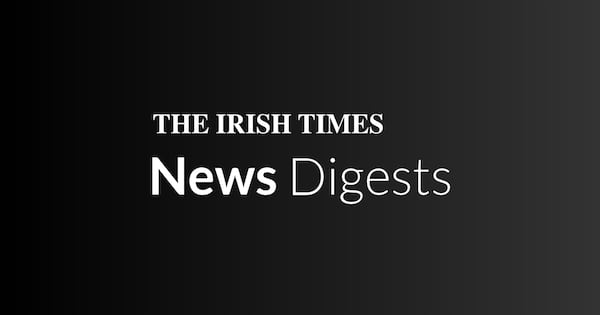Inflation rates in Ireland are back below the European Central Bank (ECB) target of 2 per cent, according to figures published this week by Eurostat, the EU-wide statistics agency. For the past couple of years as governments across Europe struggled to control rising prices, we have been told that only when we reach this level will we be able to look forward to lower interest rates, bringing some relief to tens of thousands of Irish mortgage holders among others.
So can we now look forward to some relief on monthly home loan costs, whose increase alongside that of energy prices has been a big factor in the cost of living squeeze for many Irish households over the past couple of years?
Perhaps, but maybe not quite yet. There are several factors at play here.
First, obviously, in the EU context, Ireland is not an island and the ECB will be looking for inflation rates across the euro zone bloc to fall close to the 2 per cent level before triggering cuts that will have impacts across each member state.
While the Irish figure may have fallen below the 2 per cent level – to 1.7 per cent on this initial estimate – the rate across the euro zone is 2.4 per cent and it remains as high as 4.9 per cent in Croatia and above 4 per cent in some other member states. Further complicating things, although the euro zone figure as a whole is falling, in some countries the readings are going the other way.
Then there is the issue of sustainability. When the central bankers gather in Frankfurt, they want to be confident that any fall in inflation is durable. And, on this, there continues to be concerns, not least regarding the rate of wage inflation.
Ironically in the context of the debate over mortgage interest rates, the big difference between the harmonised inflation figure and the consumer price index (CPI) produced by our own Central Statistics Office, is mortgage interest. This, in part explains why Irish inflation as measured by the CPI in February (the most recent month for which figures are available) was 3.4 per cent while the reading on the harmonised index for the same month was 2.3 per cent.
All of which means that, despite the good news, we may be waiting some time yet before we see a cut in interest rates. The betting odds say that June’s ECB meeting remains the most likely point for a first move back down in the interest rate cycle. And even then, that cut is likely only to be a quarter point.
But what happens then?
Martina Hennessy, the chief executive of online mortgage broker, Doddl.ie, cautions that the timeline for future rate cuts remains uncertain. Even among industry experts, there is no clear consensus. Some suggest the market is pricing in potential rate cuts of up to 1.5 percentage points by year end; others predict no more than four quarter points reductions by the start of 2025.
And while any cuts from the current ECB level of 4.75 per cent will come as a relief to large numbers of homeowners, Hennessy notes that it would require “extraordinary economic circumstances” for interest ECB rates to fall below the 2 per cent level. Mortgage holders hoping for a return to the super low rates that prevailed between 2016 and 2022 will inevitably be disappointed.
There are over 700,000 mortgages in Ireland, Hennessy says, just over 500,000 recorded as primary residences. Of these, around 120,000 are on tracker rates where movements in the interest on their loan is tied directly to action at ECB level. Any movement in the ECB rate will be passed on to this group within 30 days.
While they benefited most from the era of ultra-low rates, they are among those hardest hit by the 10 rate increases imposed since July 2022 as the ECB rate jumped from 0 per cent to 4.75 per cent. With the average tracker margin in the Irish market at 1.15 percentage points above ECB, the average Irish tracker mortgage holder in Ireland is currently paying an interest rate of 5.9 per cent.
Others paying a particularly close eye to proceedings are the 70,000 Irish mortgage holders who are due to come to the end of low fixed rates over coming months, according to Doddl.ie’s Hennessy.
And then there are those on standard variable rates. In recent years this has been a much smaller group but it does also include the holders of about 80,000 loans that are being managed by mortgage service provider Pepper on behalf of a number of investment funds – sometimes referred to as vulture funds.
These are higher risk borrowers, many with credit ratings that have been damaged at some point. Already by definition vulnerable financially, they are paying a premium for their past credit history and are probably those most in need of some relief.
The problem here – and also for those looking to take out a new mortgage either as first-time buyers or to fund a move to a new home – is that, unlike those on trackers, there is no guarantee that Irish lenders will respond immediately to any cut in rates by the ECB.
“Banks may be slow to pass on the full extent of cuts due to not fully passing on the increases of the past two years,” Hennessy says, adding that they will determine the timing of any action on rates for their customers based on their own costs and broader market forces.
“Several factors will impact downward rate movement in the Irish market, including the funding mix of Irish lenders and, significantly, the lack of competition. There may have been a time when political pressure played a part in keeping rates somewhat in check, due to State shareholding in the pillar banks,” she says, but this is now a much less significant factor.
That means, consumers need to be more proactive in hunting down the best rates and letting their money do the talking in persuading uncompetitive banks to pass on the benefit of lower rates more quickly.
Inertia has cost Irish people dearly in recent years on the savings side with the vast majority leaving their money in demand deposit accounts paying little or no interest even as the banks started to offer more attractive savings options.
The banks themselves expressed astonishment at this failure of consumers to act in their own best interest even as they reported massive profits that were generated largely by the excess savings on which they were securing 4 per cent from the Central Bank even as they paid practically nothing to the savers.
It is up to consumers not to make the same mistake with their home loans. Hennessy says that despite the lack of competition in the Irish banking market, there is a record 3.3 percentage point gap between the highest and the lowest mortgage rates currently available.
Those coming off fixed rates or looking to switch loan or provider in search of better value need to understand the strengths of their position, she says. Having a lower loan-to-value ratio because of the equity built up in your property or being eligible for a more attractive green rate on the basis of a Building Energy Rating of B3 or higher as a result of investments in things like better insulation, solar panels and the like, will all put mortgageholders in pole position to secure the best interest rates available.
What they definitely should not do is accept the first rate offered at the end of a fixed period, she says. Instead, they should proactively review and question their lenders, exploring better options available in the market.
New homeowners also need to do their research. With such a gap between the best and worst rates available in the Irish home loans market, getting it wrong could prove expensive in the long term, even with the benefit of rate cuts over the coming years.
The other issue, for those looking for the security of a fixed-rate loan is how long to lock themselves in for.
Hennessy says that back in 2020, mortgage holders could lock in to seven-year fixed rates at 2 per cent and below, by 2022 as rates started rising, many were locking themselves in to five-year fixed rates to safeguard against further rate increases.
With the current expectation that rates are going to fall imminently, she says homeowners are favouring shorter fixed terms, such as three years and there has also been a return to growth in the numbers opting for variable rates.
The bottom line is that mortgage holders need to be more active in chasing value. While tracker loan holders will automatically see the cost of their borrowing fall, this group accounts for less than one in five mortgage customers and such loans are not an option for anyone currently in the market for a mortgage either as a new customer or a switcher.
The rest of us will benefit only as banks choose to drop their rates.
If the 500,000 home loan customers outside those on trackers or with the likes of Pepper show the same apathy as we do with our savings, there is no incentive for the banks to pass on the benefits of the coming reductions in ECB interest rates in a timely manner. It is in consumers own interest to use the power of persuasion. Taking the time to source the optimum rate available and acting on it is the best way to nudge lenders into quickly passing on the benefits of interest rate cuts.
You can contact us at OnTheMoney@irishtimes.com with personal finance questions you would like to see us address. If you missed last week’s newsletter, you can read it here.
















